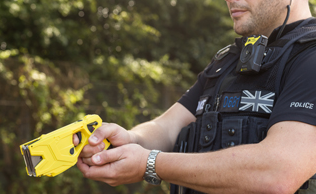How Tasers Work and Why They Don’t Always Deliver Desired Results
On Apr 14, videos surfaced showing Singapore police using a Taser to subdue a man after a violent attack at Beach Road. Although the Taser worked in this case, the police explained that its effectiveness varies based on factors like where the probes land, the distance, and the subject’s movement. In another incident in Bendemeer, despite multiple Taser attempts, a man advancing with a knife was shot by police after remaining unrestrained. This variability in effectiveness is influenced by factors like body movement and clothing, making it a dynamic tool in law enforcement.
According to the Singapore Police Force (SPF), the Taser X26P they use releases probes connected by wires that deliver electric charges to incapacitate subjects temporarily. A crucial factor in its success is the spread between the two probes, which affects how much of the muscle is targeted. If the probes don’t embed properly, miss the subject, or get dislodged due to movement, the Taser may not work as intended.
The Taser works by overriding the sensory and motor nervous systems, causing neuromuscular incapacitation, but factors like clothing or an incomplete circuit between the probes can reduce its effectiveness. Even physical conditions like drug or alcohol intoxication can alter the effect, though Tasers do not rely on pain compliance but on involuntary muscle control. However, reports from some experts indicate that individuals on drugs or under adrenaline influence might resist the effects of a Taser.
SPF noted that, while Tasers are a non-lethal option, officers are trained to use a range of force depending on the situation. If a Taser fails, officers may resort to other measures, including firearms. Tasers, including newer models like the Taser 7, are continuously updated with features like improved probe spread for better incapacitation rates. Additionally, SPF officers undergo rigorous training, with some even experiencing the effects of a Taser to understand its impact.
Overall, Tasers are a valuable tool, but their success in any given scenario depends on a combination of distance, subject behavior, and probe contact. Training and advancements in technology help ensure officers can deploy Tasers safely and effectively, but as recent incidents have shown, the outcome is never guaranteed.








